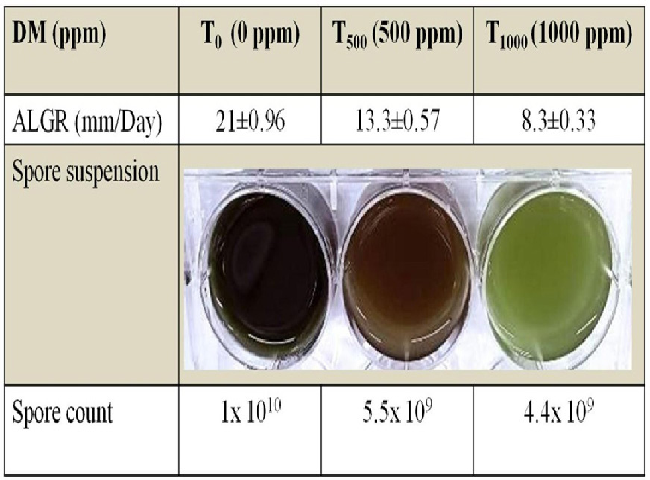Employing Trichoderma to Alleviate DimethoatPhytotoxicity In Sorghum Bicolor
DOI:
https://doi.org/10.5530/ctbp.2023.2.24Keywords:
dimethoate, PGPF, Sorghum bicolor, phytotoxicity, proline, chlorophyllAbstract
<p style="text-align: justify;">Dimethoate is a broad spectrum organophosphate pesticide which is used to control pests of order hemiptera, diptera, or-thoptera, and araneae. In Sorghum bicolor it is found to control green bugs, aphids, spider mites, and grasshoppers. The present study details the impact of dimethoate (30% EC) on S. bicolor through a short term (a fortnight study) in-vivo bioassay and an extended soil microcosm study (7 weeks study). Experiments were simultaneously carried out at low (10 ppm, 50 ppm) and high (300 ppm, 600 ppm) range of dimethoate. The in-vivo bioassay pro-vided evidence of increasing dimethoate toxicity on Sorghum bicolor ranging from 19 % to 70 % at 10 ppm and 300 ppm respectively. Trichoder-ma harzianum T103, a plant growth promoting fungus (PGPF) with proven monocrotophos (organophosphate pesticide) tolerance, was engaged to verify its potential to support plant growth under dimethoate stress. Rhizospheric administration and seed biopriming with T103 improved growth of Sorghum bicolor by a factor of; root length (1.6, 1.8), shoot length (1.1, 1.2) and biomass (1.4, 1.4) at 10 ppm and 300ppm respectively. LD50 of T103 value for dimeth-oate is ~ 300 ppm. T103 was observed to sporulate under dimethoate stress (at con-centrations as high as 1000 ppm), however, the spore density was lesser as compared to unchallenged isolate growth. FTIR spectra indicated ongoing dimethoate degradation registering change in peaks at 1043 (-C-O stretching), 1235 (-OH,–NH deformation), and 1737 cm-1 (C=O stretching). In addition, ap-pearance of new peak at 3456 cm-1 (–OH, -NH stretching) also suggest formation of intermedi-ate and end product. Concentration of proline, a biochemical stress indicator, was greater in untreated plants than in treated plants sug-gesting signs of phytotoxicity in the absence of T103. The findings demonstrate that, at both low and high concentrations of dimethoate T103 can reduce dimethoate-induced growth retardation in S .bicolor.\Keywords: dimetho-ate, PGPF, Sorghum bicolor, phytotoxicity, proline, chlorophyll</p>



